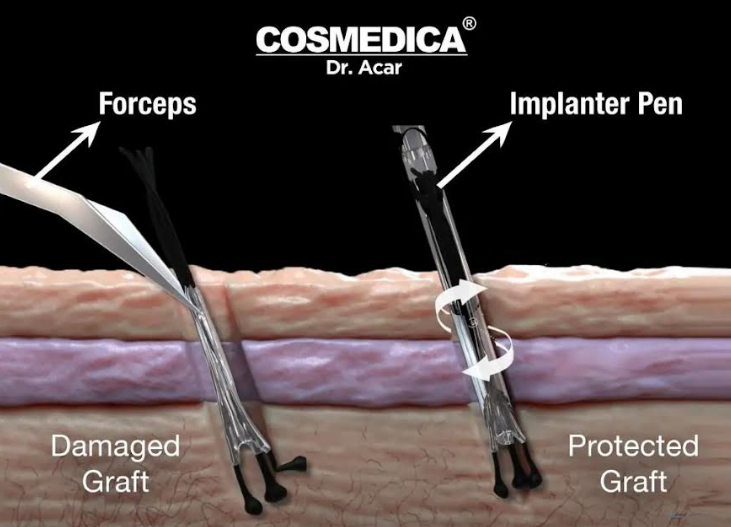
Hair transplant before and after photos show how effective the treatment can be at restoring thinning or lost hair. While hair loss treatments may not work for everyone, they can still be a valuable tool for those who want to gain back their confidence and control of their natural hair.
Hair loss may seem like a trivial issue, but it is actually a serious problem that can prevent people from living normal lives. That's why hair transplants are so important: they allow men and women get the hair they want without any risk or complications. Dr. Levent Acar's medical practice Cosmedica in Istanbul, Turkey provides quality hair transplant solutions that are tailored to each patient's needs and lifestyle, delivering natural-looking results that are long-lasting and easy to maintain. Dr. Acar believes in providing his patients with the best hair restoration results possible, and he does so through a careful evaluation of each client's specific needs and requirements.
What types of hair transplants exist?
If you're looking to undergo a hair transplant, you have two options: follicular unit extraction (FUE) or follicular unit transplantation (FUT). FUE is a more advanced form of hair restoration which allows the surgeon to harvest hair from the back and side of your head. The resulting grafts are used to repair areas of your scalp that may be damaged or bald.
FUE Hair Transplant Procedure
Follicular unit extraction (FUE), a hair transplant technique, is often favored by hair restoration patients. In some cases, FUE can be simpler and more cost-effective than other techniques and can produce natural-looking results. While the technique is widely accepted, there are some challenges that accompany FUE procedures. For example, surgeons must make sure they do not leave follicles in unnatural states or damage a patient's skin during the process .
There are three types of FUE hair transplants:
- Manual FUE
- Robotic FUE
- Sapphire FUE
Manual FUE
The manual FUE hair restoration method, which can also be referred to as follicular unit extraction (FUE) because it involves the extraction of individual follicles from the donor site, is a technique that relies on the use of a handheld device to pierce the root of each follicle for removal. In contrast to older methods that involved cutting or burning each follicle out, this method leaves the donor area untouched and natural-looking.
FUE Sapphire

FUE is a hair restoration technique that has revolutionized the industry with its slim, single-use instruments, which are used to extract hair follicles from the back of the head in a more precise and accurate manner than traditional methods. With this method, surgeons first make a small incision on the back of the head and then use a precious gemstone to cut out individual follicles known as sapphire. Sapphire is used as it allows for a more accurate and precise cut than traditional methods such as needles.
Robotic FUE
The robotic follicular unit extraction (FUE) procedure is a type of transplant surgery used by physicians to add artificial hair to the scalp. During the procedure, hair is removed from the back of the head and nailed in place with a tiny robotic arm. In this way, doctors can create full or bald-looking heads without leaving any scars behind.
In addition to having a faster recovery and more accurate placement in comparison to older hair transplantation procedures, robotic FUE hair transplantation is performed in less time than traditional FUE, which decreases the risk of scarring and prevents loss in natural hair growth.
FUT Transplantation
FUT technique is a type of hair transplant surgery that involves removing hair follicles from the donor area and implanting them in the recipient area. The incisions are made to remove individual follicles. The process may result in a scar at the top of the scalp but not further down the back of it.
DHI Transplantation

The DHI tool takes advantage of a well-known technique called "FUE hair transplantation," which has been used for over a decade. FUE is when a surgeon manually extracts follicles from a donor area, usually the back of your head, and implants them in your balding areas. The DHI pen allows you to do both extraction and implantation at the same time, making the process significantly more efficient.
Is a hair transplant even worth it?
Hair restoration surgeries may be a good option for people who have hair thinning and hair loss. These procedures may not be permanent solutions, but they can help to restore the fullness of one's hair and self-confidence.
What is a good age to get a hair transplant?
A hair transplant is an effective treatment option for anyone suffering from hair loss and thinning hair. While the procedure can be carried out on individuals aged 18 years and above, basically as soon as you start noticing hair loss, a hair transplant should not be undertaken before 25 years of age. That is because the end stage of male pattern baldness and the receding hairline may not yet be fully determined.
How long do hair transplants last?
Hair transplants are the perfect solution for hair loss concerns. Hair transplant surgery patients can expect to see their desired results in approximately six months, but they will not be complete until a year after the procedure. With hair transplantation, your new hair will last a lifetime because you are having healthy hair follicles transplanted into thinning or bald areas.
What is the success rate of hair transplants?
Successful hair transplant results are crucial to the well-being of transplant patients. Success rates depend on several factors, including the treatment method and experience of the doctor performing it. Studies have shown that 80-90% of transplanted hair grows happily in its new home after surgery with removal techniques, ensuring a healthy growth for years to come. Usually, there are very few side effects, and most are easily remedied.
By now you should know everything about the hair transplant before and after process and outcomes and how successful a hair transplant implantation can be. Rest assured that a high success rate is almost guaranteed when you do decide to get a hair transplant.
